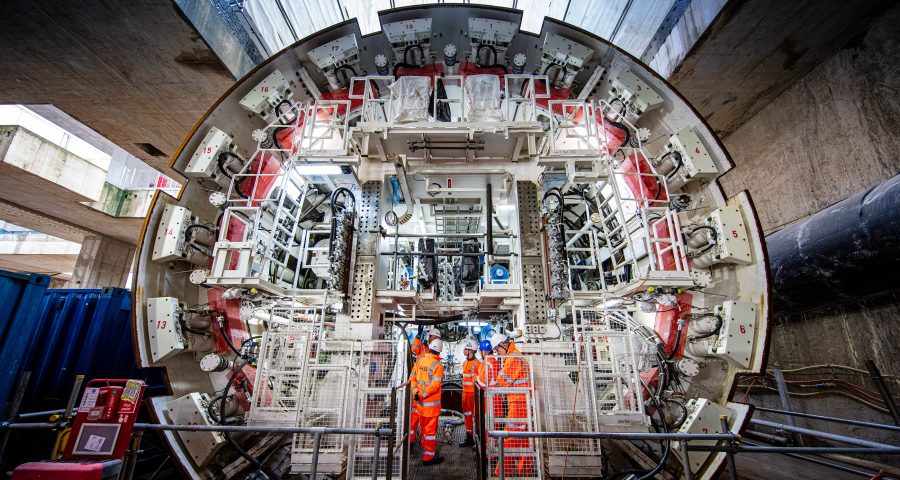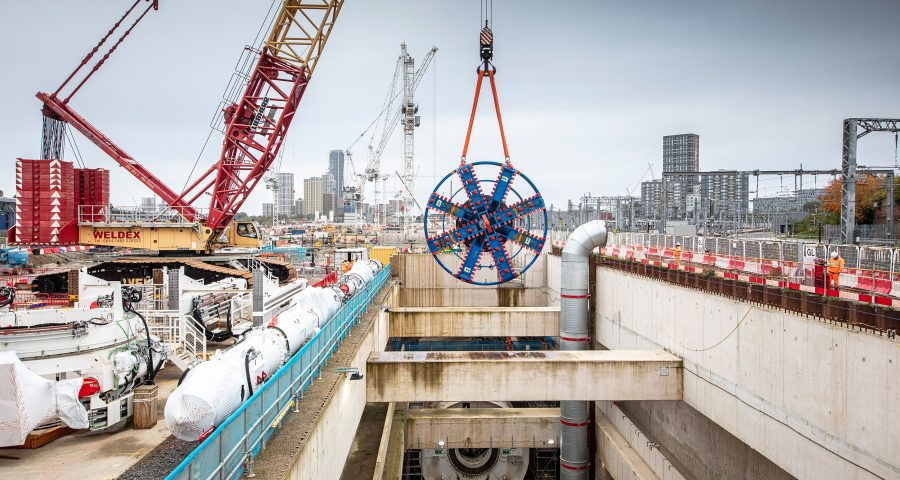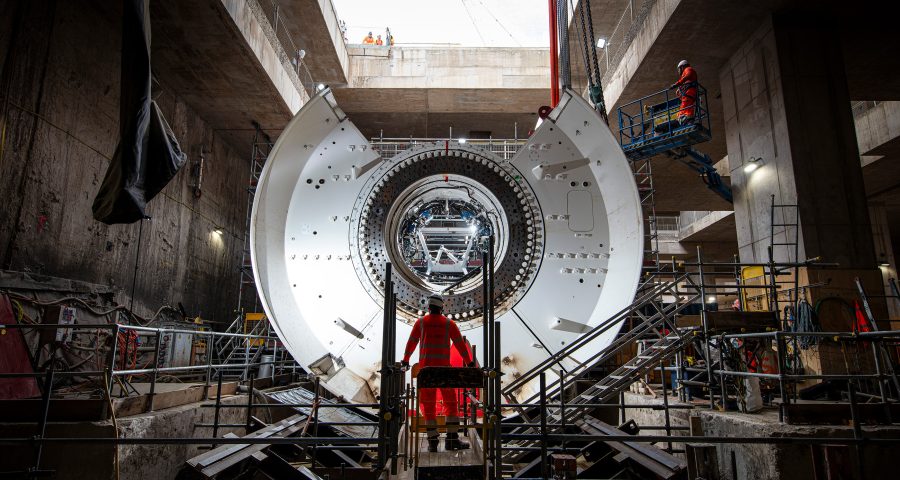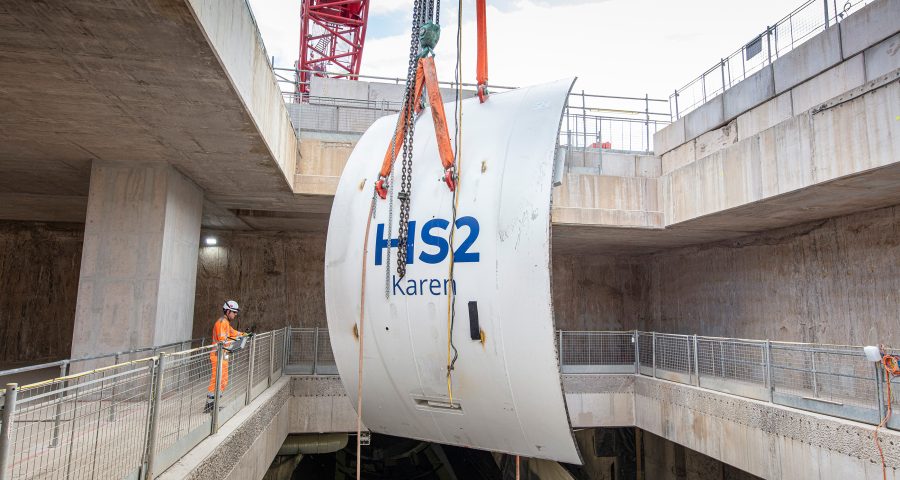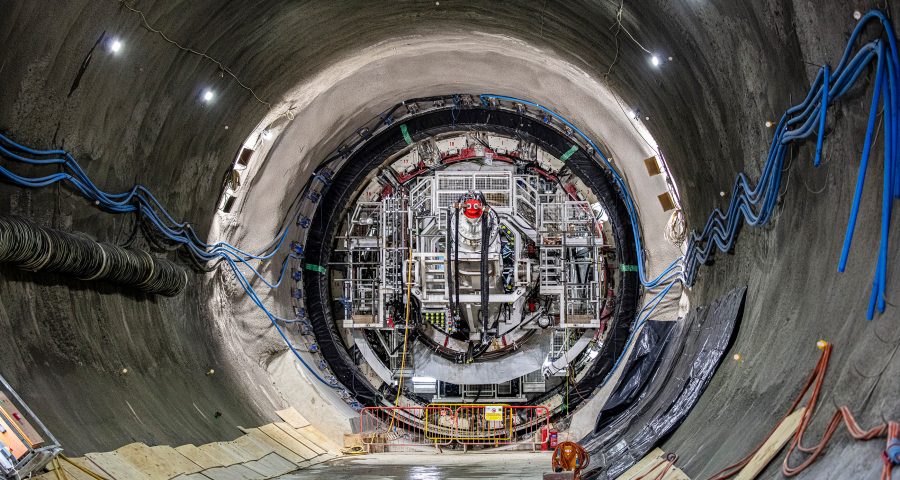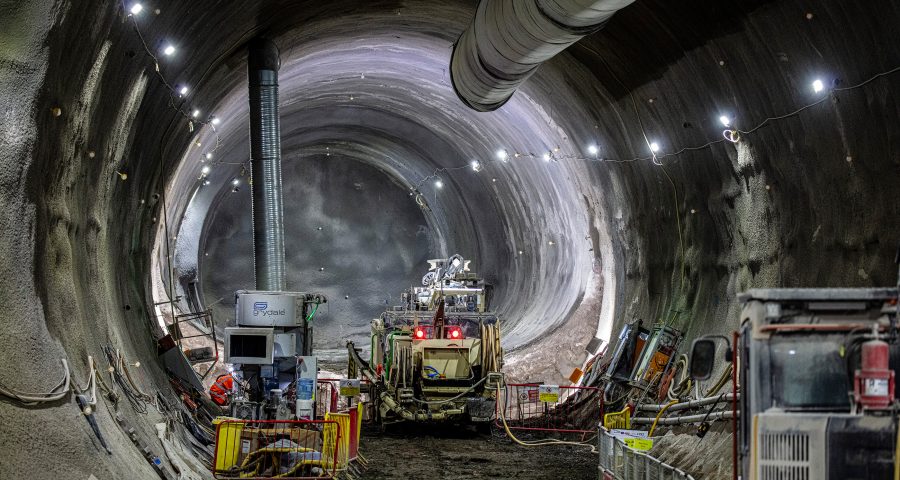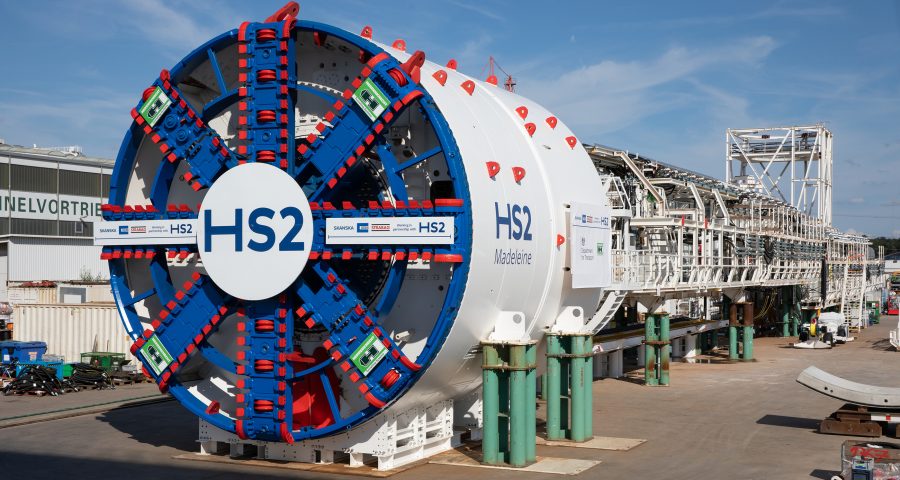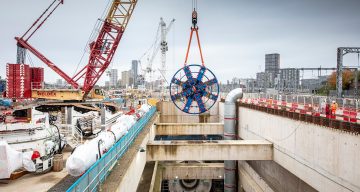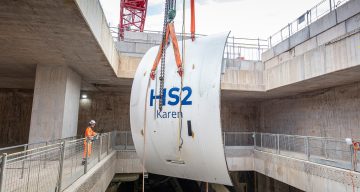
Euston Tunnel
Euston Tunnel will carry high-speed trains between London Euston Station and Old Oak Common Station. The 4.5-mile (7.2km) twin-bore tunnel will reach depths of up to 50m below ground. It will be excavated using two tunnel boring machines (TBMs), Karen and Madeleine, which will be launched from the eastern section of HS2’s Old Oak Common Station.
Tunnel construction
Engineers have begun assembling two giant tunnelling machines that will dig the final 4.5 miles of underground high-speed railway that will carry HS2 trains into the heart of the capital.
Weighing an incredible 1,250 tonnes, each of the tunnel boring machines (TBMs) will launch from an underground box at one end of the project’s Old Oak Common station. They are expected to take around one and a half years to complete their drives.
The two 190m long TBMs were manufactured by world-leading tunnelling experts Herrenknecht AG in Germany and were transported to Old Oak Common in pieces before being reassembled on site. The HS2 team lifted the machine in pieces using a 750 tonne crane into the Old Oak Common underground box, where they are being reassembled, ready to bore to HS2’s terminus station in the capital.
The cutterheads of each machine, which have been optimised to cut through London clay, is 8.53m across with the inner diameter of the tunnel set to be 7.55m.
The Atlas Road Logistics Tunnel, which will be used to deliver materials and remove spoil for the Euston Tunnel, has been completed.
Discover our tunnels in London
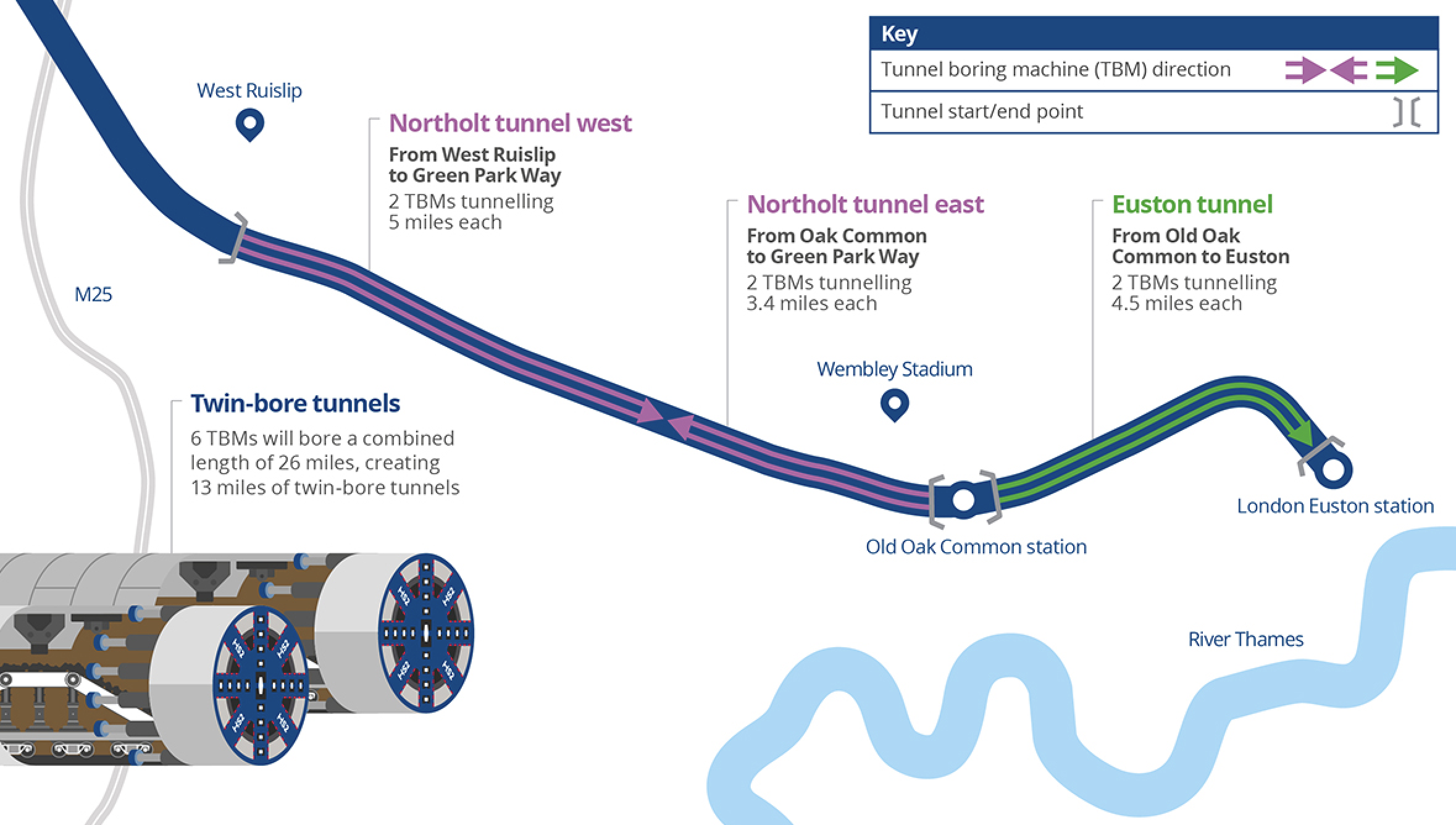
Atlas Road Logistics Tunnel
The Atlas Road Tunnel won’t be used by HS2 trains, but instead will be used to deliver materials and remove spoil from the northern portal where HS2’s Euston twin bored tunnel will be constructed.
The tunnel drive was completed on January 23 2024.
The 853m long tunnel, which runs from the Atlas Road logistics hub to the eastern section of the Old Oak Common station site. The logistics tunnel supports our continued commitment to reducing cost and carbon by removing one million lorry journeys off London’s roads. It will be used to deliver materials to the two Euston Tunnel TBMs, including over 56,000 concrete tunnel segments manufactured by STRABAG in Hartlepool, and take away the London Clay excavated.
A conveyor system will also run through the logistics tunnel, and will connect to an existing conveyor at Atlas Road, taking the London clay being excavated to construct the Euston Tunnel to HS2’s London Logistics Hub at Willesden Euro Terminal. From there, the spoil will be taken by train for re-use at sites in Kent, Cambridgeshire and Rugby.
Discover our logistic tunnel in London
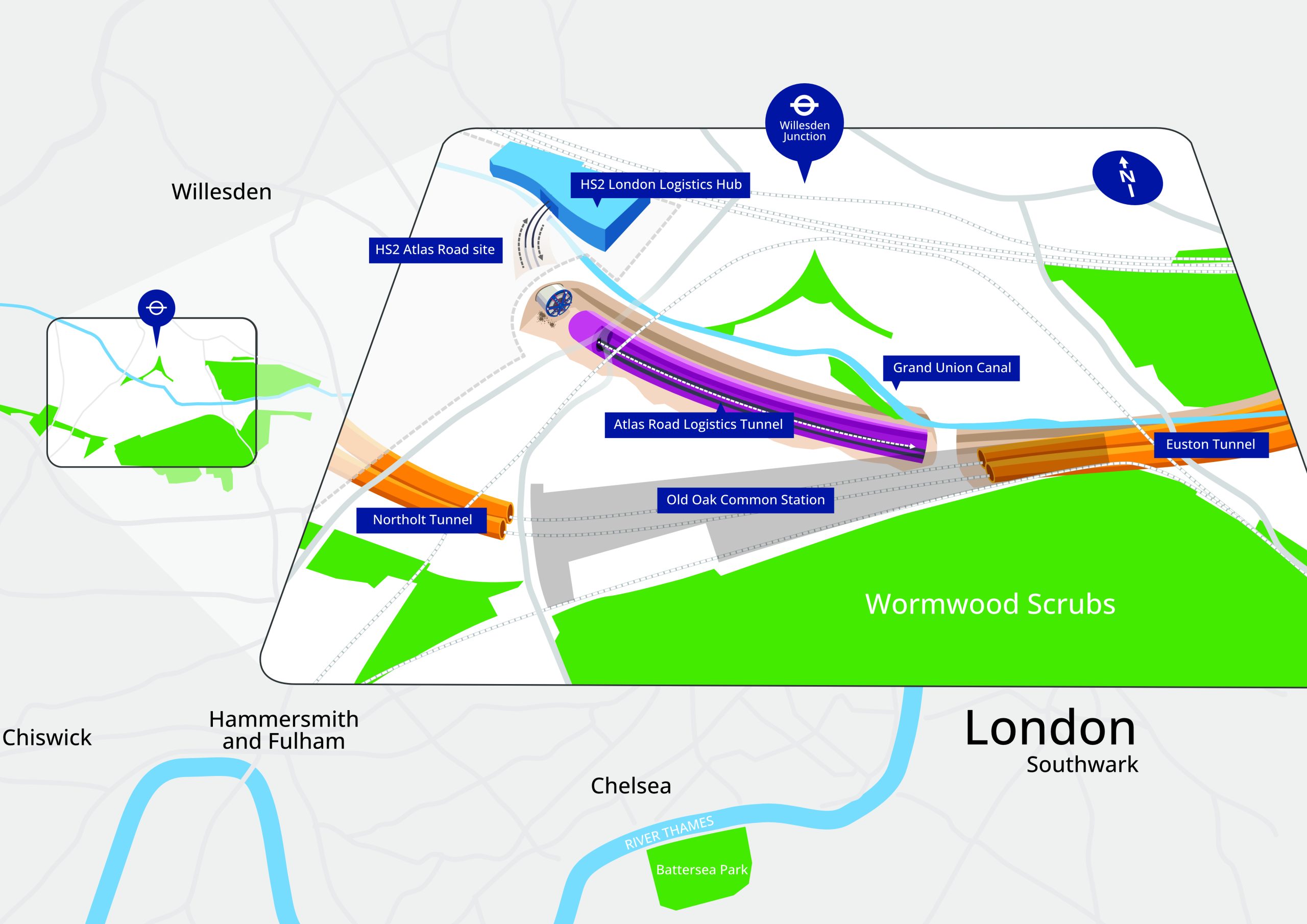
Euston Tunnel Ventilation Shaft & Headhouse

Adelaide Road Headhouse
The Adelaide Road Headhouse, in Camden, will connect to the HS2 tunnels from Euston to Northolt.

Canterbury Works Headhouse
The Canterbury Works Headhouse is located in South Kilburn, behind Canterbury Road and next to the existing railway tracks.

Euston Approaches
The Euston Approaches is the section of track that will connect the Euston Tunnel South Portal to Euston Station.

Euston Portal Headhouse
Euston Portal Headhouse and Ventilation Shaft will sit above where the tunnels connect to the underground box south of Mornington Street.

Euston Cavern Headhouse
The Euston Cavern Headhouse will be in the railway cutting at the northern end of Park Village East in Greater London.
